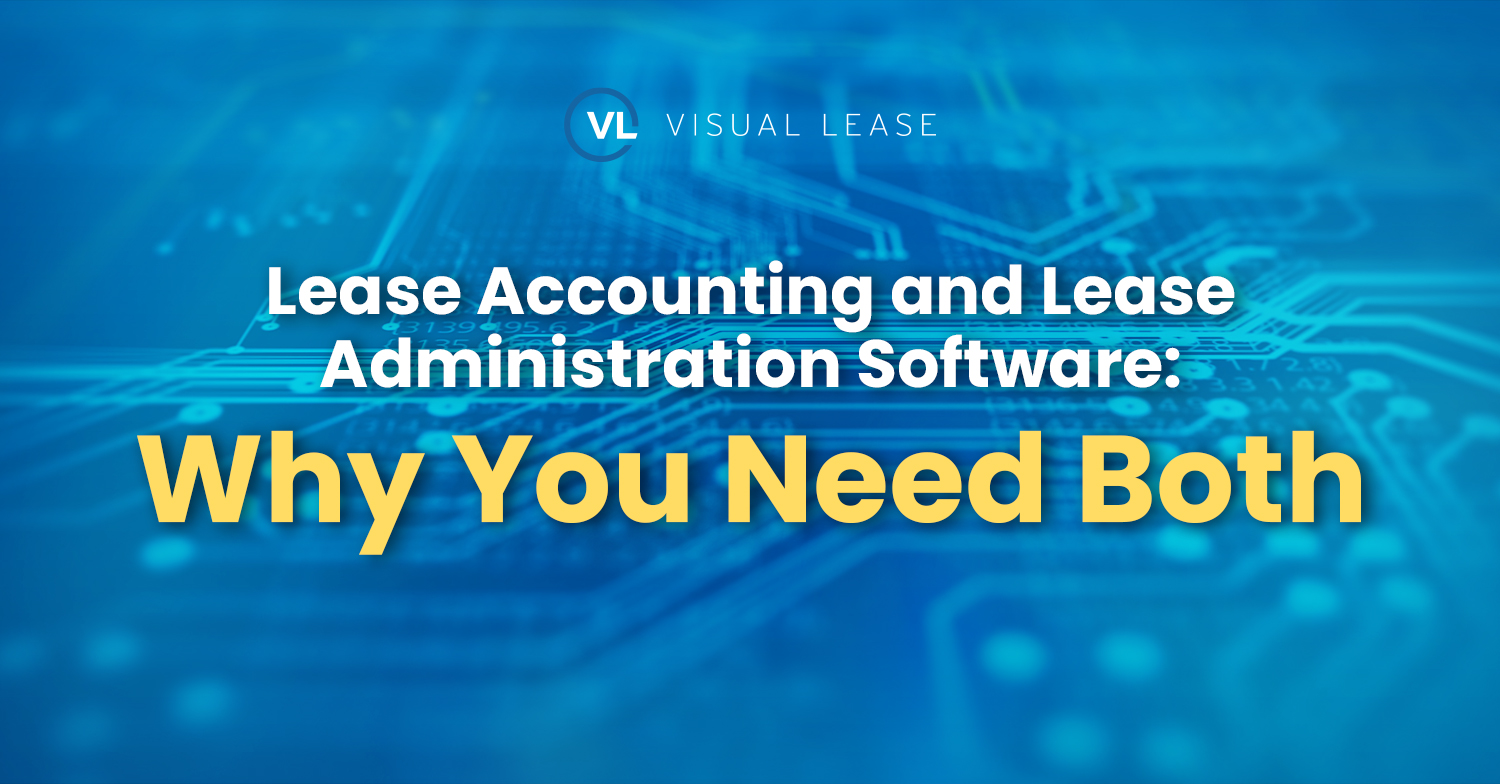
Lease accounting compliance is not just a one-and-done disclosure. It is a new approach to accounting that includes an ongoing, cross-departmental effort – and a much higher level of scrutiny.
Lease accounting is interdependent on lease administration. The lease accounting standards (ASC 842, IFRS 16, GASB 87) require collecting leases from across your organization and staying on top of them as they change throughout the year. It is a collaborative effort that requires dedicated people (often cross-departmentally in IT, procurement, legal, etc.) with strict attention to detail.
To do so effectively, you need to implement strong lease controls and reliable technology. And though the lease accounting market offers a wide selection of software solutions to streamline compliance efforts, most lack essential lease administration capabilities. Many of the products on the market fail to address the importance of long-term lease administration throughout the financial process.
It is not possible to maintain lease accounting compliance without accompanying technology that supports both lease accounting and lease administration. Here’s why.
Software that includes both lease administration and lease accounting functionality is important to:
#1 Ensure centralized lease data
Having both lease administration and accounting together in one robust solution provides reliable, consistent lease information to support continued compliance and confident financial reporting. This significantly reduces errors, increases efficiencies and helps establish cross-functional collaboration across your business.
Consider this: When you get a new lease, it must be reviewed and abstracted into a system. You’ll need to implement controls that track both the legal and financial elements of that lease, which can control start dates, options, dollar amounts, etc. A platform that has both lease accounting and lease administration ensures that, from day one, your lease information is reliable and up to date.
With lease administrators owning the role of maintaining a single source of truth, accountants can be confident that all data and calculations will be consistent and accurate. In addition, software that supports both functions boosts efficiency by cutting down on time-consuming, tedious tasks outside of the accounting scope, such as searching for pertinent documents, tracking monthly rent increases and handling lease amendments.
#2 Track lease changes throughout the year
Leases are dynamic – and maintaining lease accounting compliance is not a one-and-done disclosure. It is an entirely new approach to accounting and an ongoing process. This can be tricky because leases are complex legal documents that sometimes do not have a clear owner. There are leases (real estate, equipment, embedded leases in maintenance agreements, etc.) that are often handled by different departments within a business.
Lease terms change as your business takes on new spaces, scales back or renegotiates. Implementing lease controls within lease accounting and administration software is the only way to ensure reliable data, repeatable processes, trustworthy guardrails and ongoing monitoring throughout the lease lifecycle. While some organizations selected lease accounting solutions lack this capability, they will run into major issues sustaining compliance as their leases change.
#3 Maintain a comprehensive audit trail
It is important to remember that compliance is not just about meeting accounting standard requirements, but also implementing proper policies and procedures to reduce risk.
Using lease accounting and lease administration software that has comprehensive user rights, integrated approval workflows and audit trail capabilities provides additional peace of mind knowing that any changes – including ones made to critical dates, financial impacts of modifications and more – are fully auditable.
Leases are often managed and modified by a variety of entities both inside and outside an organization. Due to the number of people involved in altering important calculations, the accuracy of the lease data can be difficult to control and may be prone to error without a solution built to handle multiple users. Taking this precaution in the beginning of your compliance journey will save you a lot of time long-term.
Lease accounting and lease administration go hand-in-hand
Lease accounting solutions that do not integrate lease administration into the software are unreliable, incomplete and more complex. Having both within one location is essential to ensure a well-rounded compliance strategy that covers everything you need for complete and accurate data management.























